
Accessibility in Poznan & Warsaw
Accessibility in Poznan & Warsaw
My name is Mike Matlock and I have a disability called Spinal Muscular Atrophy. I’m in a wheelchair and I have a caregiver to help me eat, use the bathroom, and just make sure I stay upright. Video games are my passion. I write articles and make videos talking about how games can be more accessible to disabled people. This led me to do more public speaking and I also teach classes on disabled representation and accessibility. Now I travel more, but as you know it can be difficult going to other countries when you are in a wheelchair. Last year I was invited to Poland to host a panel on Accessibility in Gaming. The GIC is one of the largest gaming conventions in Europe and it takes place in the city of Poznan. The staff and representatives were very gracious and paid for me to fly out there with my caregiver and stay for a week in a hotel. I learned a lot on that trip and I want to tell you guys a little bit about my experiences and some issues that I ran into when it came to accessibility.As you might know, traveling on a plane in a wheelchair can be kind of a hassle and extremely tiring for those with a severe disability. I will save all of my thoughts about air travel in a wheelchair for that particular section of this site. However, I do think it’s important to mention that we ran into a few problems with the Lufthansa airline. They didn’t have a plane going to Poznan that could carry my wheelchair so we ended up in Warsaw which is more than 2 hours away from our hotel room. We had to take several trains and cabs so in the end it took longer than expected on the first day. When we landed things went pretty smoothly.Accessible Transit:Like I said, the GIC organizers were amazing and had already planned out having travel escorts when we arrived and wheelchair taxis ready to pick us up. This is where I got a chance to try out local transit in Poland. I think it’s always important to research policies and culture when you’re going to a foreign country. I tried to look into the state of accessible transit in Poland before I left America. From what I read, it really depends on which city you are in and what bus/train you are riding. Most buses and trains have built in or pull out ramps, but not all of them. I can attest to this. On our way to Poznan we rode a train from the city of Warsaw that was very modern and we received a separate car for a handicap passenger. The train had a ramp that the driver activated to slide out. Our handicapped passenger car had a nice spot for me to park my wheelchair and strap in right next to the window. However, on our way back home we rode a train and had a much different experience. This train didn’t have a ramp so security had to go on the hunt for a portable one. It seemed similar to an American subway this time where there were a lot more people and we were packed in tight. There wasn’t a separate handicap car, but there was a section off to the side in the hallway with no straps. We had to ask some able bodied people to vacate the handicap spot because there was so many people and hardly any space. Ticket seating numbers were pointless on this train. Transit Accessibility really depends on what city you are in, so I thought it was worth mentioning.
We never had to ride the bus in Poland so I can’t really give any feedback on that. I did notice that Warsaw seemed to have more buses with built in ramps then in Poznan. We got to our hotel and from then on we used an accessible car service to get around the city. “Accessible Poland Tour” is a service I looked into before I left America and when I suggested it to the GIC staff they kindly paid them for daily rides. I believe the service was originally intended to help disabled people get a tour of the city, but they were able to accommodate us just for traveling to and from the convention. I think they had several different vans in their possession, some with slide out ramps and others with large mechanical lifts for motorized wheelchairs. I never felt unsafe and the drivers were always nice and courteous. I will make sure to post links to these helpful services at the bottom of the page.Accessible Buildings:I tried to learn a few Polish words before I got to Poland, but my accent was pretty bad. Thankfully I knew a friend of a friend who lived in Poland and could speak English, so if we were ever in a bind we could always text him for an emergency translation. Also, it was an international event so most of the people at least at the convention spoke English. The GIC event took place in the area of Poznań International Fair, which is in the center of Poznań, near the Main Train Station. I think we were lucky because it turns out one of the main organizers (Sylwia Blach) was in a wheelchair and also had Spinal Muscular Atrophy. She had been organizing for years and in practice made sure that the convention floor was accessible for motorized wheelchairs. GIC stayed on relatively flat ground and there were plenty of elevators to get me where I needed to go. One of the male organizers was so helpful that he even helped us with a technical problem I was having with my wheelchair. He rallied the IT Department together and got us in working order (more on that later). My panel room where I was to speak already had a ramp and a microphone headset available for me, per my request. There is only one issue I had with the convention accessibility and that has to do with the handicap bathrooms. The convention took place in several different buildings. One of the bigger buildings housed game demos for a lot of big names studios, so that weekend I wanted to check out what they had. I’ve got a wide motorized wheelchair so the extra space in the handicap bathrooms are really helpful for me. I was starting to need one in the game building and I noticed something funny when we finally found one. The ladies bathroom had a handicap stall, but the men’s room didn’t for some reason. You could see handicap sign out front on the door to the women’s room but not the men’s room. That was a no go for me. I rolled around the other end of the building and it took 20 minutes, but we found another bathroom. Wouldn’t you know it this particular men’s room also didn’t have a handicap stall, but the female adjacent room supposedly did. It was really strange. I could only assume the designers for this building didn’t want to have to make the extra space or maybe there were budget cuts. We found one in another building, but it was odd and not very convenient. Other than that the GIC was very accessible and I was greatful that the staff was so helpful.This does bring me to my biggest obstacle that I ran into when I was in Poznan and that is they’re building designs. The majority of them do not have ramps. Well, many important ones do, but not always. You would be surprised even some banks didn’t have them. Our hotel (which I believe was also a building for studying science) did actually have a ramp on the side. You could tell the ramp was hastily created many years after the building was made. It worked fine though. There was an elevator to get to our floor, but the dining hall had stairs going down. If I needed food I’d have to get my caregiver to go and get it. Speaking of food, I was thinking during the week we could go out and check out the town. Just going out to eat at a restaurant would be nice. So one night we try and go downtown and it turns out none of them were accessible. We literally tried 11 different restaurants and none of them had a way to get in for someone in a wheelchair. My motorized wheelchair does have hydraulic features that can get me up one step, but surprisingly most of the front building doors were raised very high off the ground. It was too high off the ground for me without the help of at least 2 able bodied men. We finally found one restaurant that I could get into the front door, but then 20 feet inside there was a very big drop off. It was so bizarre because all around the drop off there was bright yellow and black paint, almost indicating to people that they said “Watch out!” I kept thinking that if there was thought enough to put paint down, warning people, then why not make a simple alteration for a ramp. Anyway, the hostess looked distraught and tried her best to help so it wasn’t anyone’s fault who worked there. The grocery stores did have good entrances and we found some nice bars that we hung out in that were handicap accessible. I asked around and it seems like the reason has to do with Poland’s history and the fact that they have much older buildings than we do. Something about preserving the original design. Still, our hotel had one and I don’t see why a portable ramp couldn’t be offered anytime someone needs to get in. However, I know very little about the government in Poland. I have no idea what other disabled people feel about it who live in the town. I didn’t really see any others except for at the convention. It’s something to consider when you come to Poznan and are disabled. Although, most people were as accommodating and helpful as they could be. Also, it’s unclear to me whether the lack of accessible entrances is a problem only in the city of Poznan or all of Poland.
Wheelchair Chargers:Lastly I want to suggest preparing for all kinds of situations when it comes to your wheelchair and specific technology in Europe. You see I was well aware that in Europe there are different electrical outlets, so I thought I was prepared when I got that little pack of converters you can get for your cell phone at the store before we left America. Unfortunately, I learned the hard way it’s more complicated than that when it comes to advanced technology like a wheelchair charger. By the second day in Poland my wheelchair needed charging, so I got my friend to plug the cheap converter into the wall socket and charge my wheelchair. The lights in our room flickered and we both thought that was odd. The next day I noticed the chair was not keeping a charge and when I asked my friend to look he said that my wheelchair charger was completely fried. Yikes. Now I was stuck in a foreign country with a dead wheelchair and my caregiver would have to push me places or I wasn’t going anywhere. I also wasn’t completely sure whether my wheelchair had been permanently damaged (turns out my wheelchair was fine, but the charger was completely shot). In order to find out what went wrong, my friend looked online and found a disabled travel blog thankfully talking about our exact situation. The problem wasn’t just the converter, but it was also the voltage levels for the wheelchair charger. North America, Central America, and Japan use electricity at 110 volts/60 Hertz while most other countries use 220 volts/50 Hertz. Equipment can get damaged if it is used with the wrong voltage, which is exactly what happened. Also, some wheelchair chargers use high amounts of power over long periods of time so a transformer may also be needed. I’ll post pictures and links to the blog (it goes into more detail about what to look for and what devices you can buy ahead of time) down below.Knowing all of this didn’t help me with the situation I was in, it just helped me prepare for the future. My first solution was to try and call around to nearby medical supplies just to see if they had a wheelchair charger I could buy or rent. In America, most scooters and wheelchairs chargers were compatible with each other, but I didn’t know if that was the case in Europe. It didn’t matter because none of the businesses we called had a charger that was available for rent and ordering a new one would take too long. All we could do was try and keep my chair turned off as much as possible and hope that we didn’t have to go up any steep hills. However, like I said before one of the organizers really helped us in this situation. We told him what happened and all he said was “I’m on it!” and got to work. I had never heard of this happening before, but he took us to the IT Department where they were attempting to make a charger for me. They would be literally making a charger out of spare parts, the original cord, and some wires. The crazy part was that it worked! Well, it never fully charged but it was enough to get by and that was awesome. It was really unexpected and I’ll always remember how nice they were. When we got back home the next week I made sure to buy another charger and plan to get a better converter.
Overall I had a great time and I learned a lot. I know the panel that I hosted about Accessibility in gaming went very well and I received a lot of great reviews. I was happy I got to go to Poland, but I do hope Poznan will become more accessible when it comes to their building designs.
I go into more detail about my gaming experiences in Poland here:
https://www.youtube.com/watch?v=zunnaCw0drQ&t=358s
Website with information about wheelchair chargers:
https://www.miusa.org/resource/tipsheet/electricityconversionCompany that I used for accessible travel in Poznan:
http://www.accessibletour.pl/en/
Log in to reply.



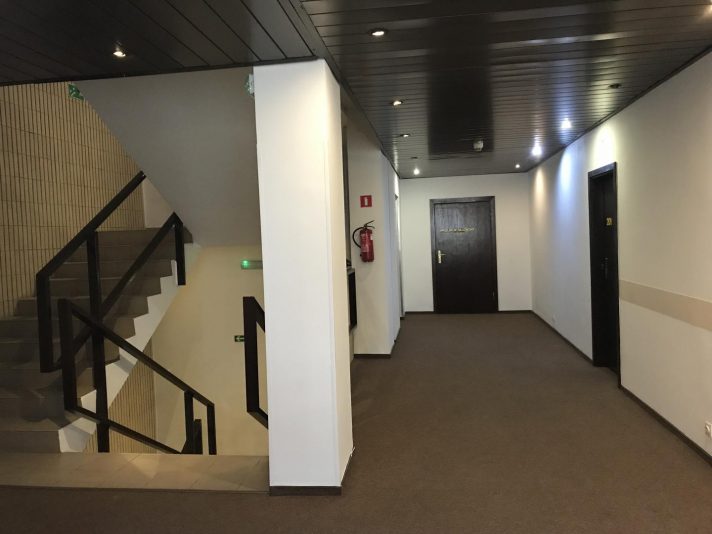
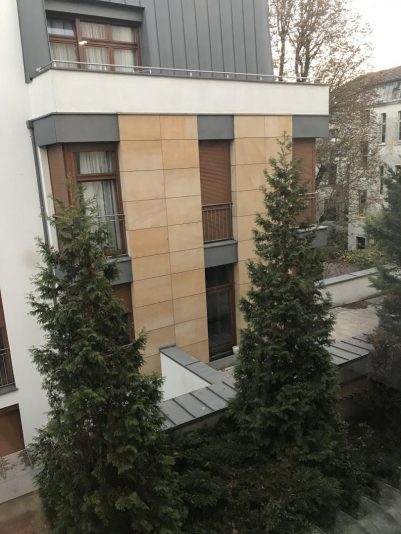
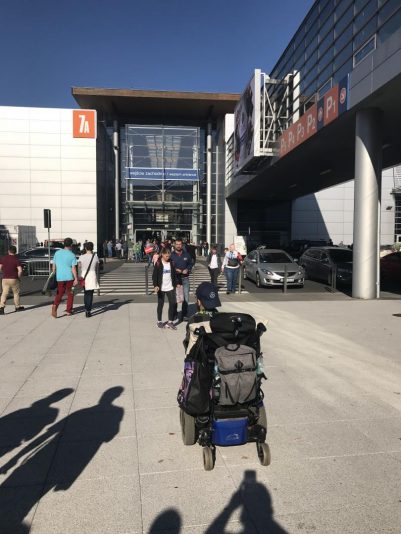
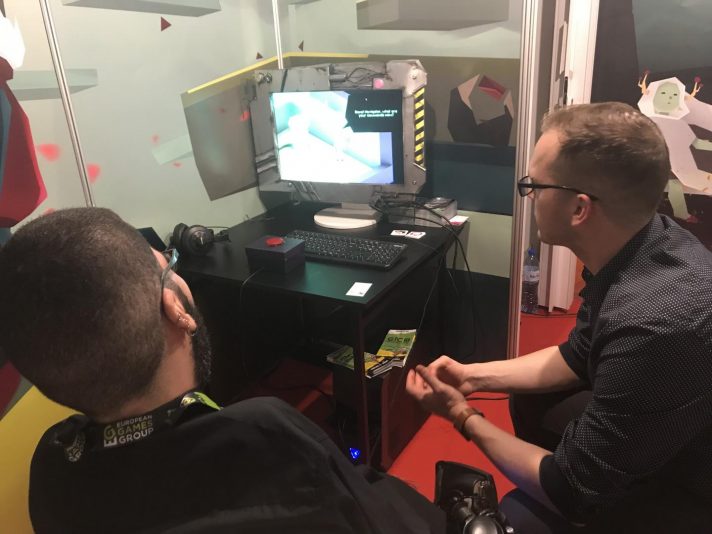
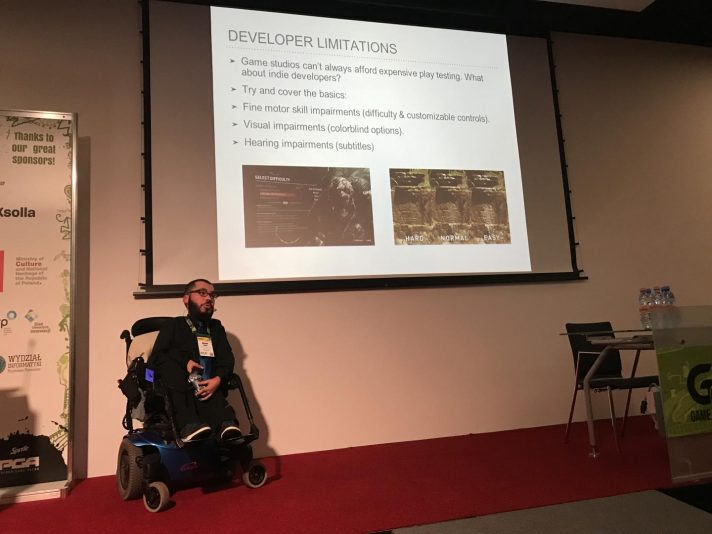
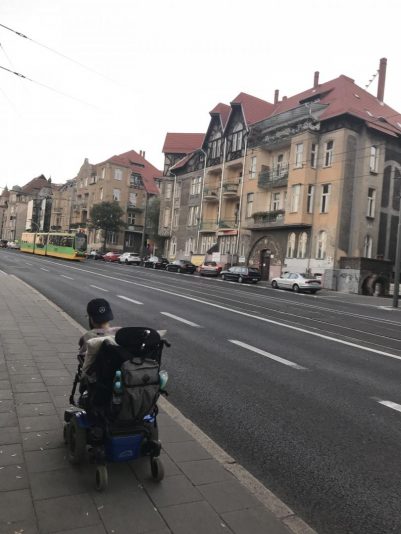
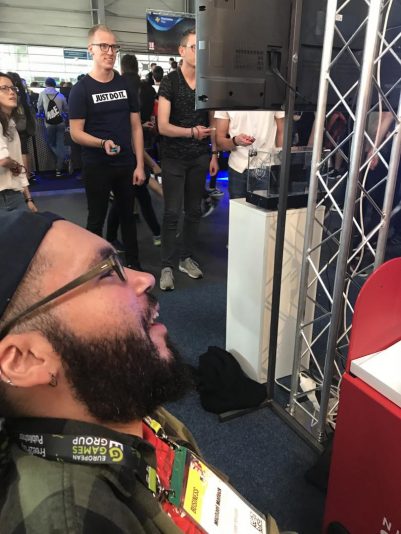
 I have not visited Poznan yet, but I have visited Krakow and Wroclaw, and I can say that unfortunately their buildings are also quite inaccessible. The best places to find accessible restaurants in Poland are the shopping malls!
I have not visited Poznan yet, but I have visited Krakow and Wroclaw, and I can say that unfortunately their buildings are also quite inaccessible. The best places to find accessible restaurants in Poland are the shopping malls! 